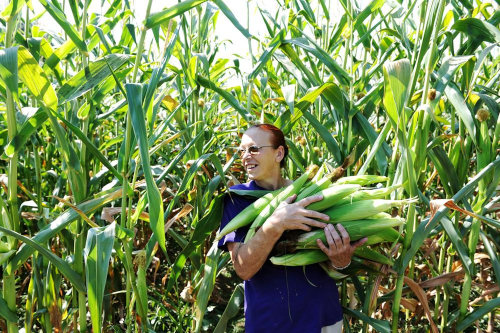In today’s competitive agricultural landscape, efficiency is essential for maximizing productivity and profitability. As the industry evolves, farmers and agricultural business owners need to adopt innovative strategies and technologies to stay ahead.

From embracing biotechnology to using automation tools and better crop protection, improving the efficiency of your agricultural business can significantly impact your bottom line. Let’s explore practical ways to enhance efficiency while addressing the current challenges and opportunities in the agricultural sector.
1. Adopt Biotech Crops for Higher Yields and Better Efficiency
Biotechnology is reshaping modern agriculture, offering tools that help increase crop productivity while reducing the need for inputs like water and pesticides. Globally, four major biotech crops—maize, soybean, cotton, and oilseed rape—account for 99% of the genetically modified (GM) crop area. These crops are designed to resist pests, tolerate herbicides, and withstand environmental stress, helping farmers achieve higher yields with fewer resources.
For example, maize and soybean are critical in feeding livestock and meeting global food demand, and their biotech versions allow for more sustainable farming practices. By reducing the need for chemical inputs, GM crops enable farmers to lower costs, improve soil health, and reduce environmental impact, all of which contribute to a more efficient agricultural business.
2. Invest in Agricultural Machine Automation
The use of automation in agriculture is a game-changer for improving efficiency. The first tractors, introduced in the 19th century, transformed farming by replacing manual labor and animal power. Today, agricultural automation has advanced beyond tractors to include smart machinery, drones, and GPS-controlled equipment. According to FieldBee, an agricultural machine automation company, these modern machines can carry out tasks like planting, harvesting, and applying fertilizers with precision, reducing wastage and increasing productivity.
Automation minimizes human error, reduces labor costs, and optimizes the use of time. For example, precision farming techniques allow farmers to plant seeds and apply fertilizers at the most effective rates, ensuring that crops receive exactly what they need. Additionally, automated irrigation systems ensure water is used efficiently, which is crucial in areas prone to drought. Incorporating these technologies can streamline operations, helping farmers get the most out of their land while cutting down on unnecessary expenses.
3. Leverage Data Analytics for Better Decision-Making
Data analytics in agriculture provides insights into everything from soil conditions to weather patterns, helping farmers make informed decisions that optimize production. With real-time data, farmers can monitor crop growth, predict pest infestations, and make adjustments to their planting or harvesting schedules based on weather forecasts.
For example, data analytics can help you understand which crops are more profitable in your region, allowing you to focus your resources on the most lucrative options. Additionally, monitoring equipment efficiency and identifying potential problems early on through predictive maintenance can help you avoid costly downtime. With data-driven decision-making, you can enhance efficiency, reduce waste, and increase profitability in your agricultural business.
4. Protect Your Crops from Weather-Related Risks
One of the biggest challenges farmers face is protecting crops from unpredictable weather patterns. In the US alone, hailstorms cause approximately $15 billion in damage to homes, cars, and crops each year. While it’s impossible to control the weather, you can take steps to mitigate its impact on your farm.
Crop insurance is one way to safeguard your investment, ensuring that even if a natural disaster strikes, you’ll have financial support to recover. Additionally, advances in weather forecasting and monitoring systems can give you better warnings of approaching storms, allowing you to take preventive measures like covering crops or adjusting your irrigation schedules.
Another approach is to invest in resilient crop varieties. Some biotech crops are designed to tolerate extreme weather conditions, such as drought or excessive rainfall, ensuring that your yields remain consistent even in less-than-ideal conditions.
5. Practice Sustainable Farming Techniques
Sustainability is no longer just a buzzword in agriculture; it’s a necessity. Implementing sustainable farming practices can enhance efficiency while ensuring the long-term health of your land. Techniques such as crop rotation, cover cropping, and conservation tillage improve soil fertility, reduce erosion, and minimize the need for chemical inputs.
Additionally, organic fertilizers, composting, and reduced pesticide use can help you maintain a balance between high production and environmental stewardship. Not only do these methods improve your farm’s efficiency, but they also appeal to environmentally conscious consumers, providing a potential market advantage.
Enhancing the efficiency of your agricultural business requires a combination of innovative technologies, sustainable practices, and strategic planning. From adopting biotech crops that increase yields to utilizing automation and data analytics, modern farming tools can drastically improve productivity. Additionally, protecting your crops from weather-related risks and investing in sustainable farming techniques ensures long-term success. By embracing these strategies, you can increase your farm’s efficiency and profitability while contributing to the future of sustainable agriculture.


